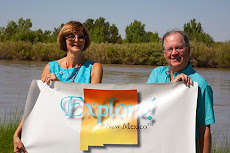
The 1964 Wilderness Act defines wilderness as land having no human footprint. Well, actually that’s the only thing wilderness can have. But there is no tire track, no helicopter skid mark, no evidence of machinery at all.
The Organ Mountains-Desert Peaks Wilderness Act is completing its journey through the U.S. Senate and it seems likely to pass there as well as in the House. And yet, the legislation has remained controversial since its inception a few years ago.
At first glance, the Doña Ana lands to be set aside as wilderness don’t seem to quality. People have been living on and manipulating these lands for about 12,000 years -- ever since the first hunter-gatherers migrated into the area. Today much of the land is criss-crossed with dirt tracks. Some are actually graded county roads. Some are used by ranchers and others are abandoned mine roads. So what’s the point of wilderness designation for these lands?
Las Cruces is the second largest city in the state. When I first came here in 1961 as an NMSU student there were about 25,000 residents. Today that number is pushing toward 90,000 and beyond. We’ll know the exact number when the 2010 Census is complete.
People need homes, schools, businesses, and entertainment. Those structures need to be connected by roads, water and sewer systems, power lines, etc. All of that requires land. What once was rural ranching country is changing. How rapidly is a matter of conjecture. Spaceport America could bring substantial high-tech industry to Las Cruces. In fact, city leaders are hoping that’s the case. As the area becomes more urbanized, the old ways of living fade into the shadows. Most of us like a good steak, but we’re mostly detached from where our beef comes from -- other than the butcher at the grocery store. It may not be too many years before ranching in this area is simply economically unfeasible and the ranch land will be sold to developers.
Without some vision of land use, without protection, the more spectacular portions of land that define who we are could be lost. I’ve seen it happen in other places, most notably around Civil War battle sites back East where suburban subdivisions back up to the cramped portions of land that was once hallowed for the American blood spilt there.
Wilderness is the highest level of protection we can offer these lands, even though they may not be purely wild lands. They are, however, the most scenic and the most accessible to our community. And they need the protection to assure they will be there generations from now when we are nothing but our great grandchildren’s distant memories.
What’s your opinion? Should we support the Organ Mountains-Desert Peaks Wilderness Act? Why or why not?
Posted by Bud Russo


 from the Carsons in Taosand the two families were friendly. Kit Carson's home eventually included 12 rooms in a few separate buildings. We toured four rooms of his home, which comprise the museum. Some rooms in another building are unstable and unsafe, soare not included in the museum. Another set of rooms across a courtyard are part of a gallery and gift shop. The museum is owned and operated by the Masons, as Carson was a member and they wanted to preserve his legacy. It was an interesting look into the character and life of the American hero. We went next to see the graves of Carson and his third wife, Josefa Jamarillo.
from the Carsons in Taosand the two families were friendly. Kit Carson's home eventually included 12 rooms in a few separate buildings. We toured four rooms of his home, which comprise the museum. Some rooms in another building are unstable and unsafe, soare not included in the museum. Another set of rooms across a courtyard are part of a gallery and gift shop. The museum is owned and operated by the Masons, as Carson was a member and they wanted to preserve his legacy. It was an interesting look into the character and life of the American hero. We went next to see the graves of Carson and his third wife, Josefa Jamarillo.
 we felt the $8 entrance fee was a bit steep.
we felt the $8 entrance fee was a bit steep.







 We headed out to El Rancho de Las Golondrinas Thursday not really knowing what to expect. Now I've been to Sturbridge Village in Massachusetts, where they've relocated a group of New England colonial houses to give you a sense of time and place. I've been to Mystic Seaport to experience whaling in the 1800s. One of my favorite East Coast places is Colonial Williamsburg and its sister living museums at Jamestown Settlement and a working Colonial farm at Yorktown. All of these span the early 1700s to the formation of the United States in 1787.
We headed out to El Rancho de Las Golondrinas Thursday not really knowing what to expect. Now I've been to Sturbridge Village in Massachusetts, where they've relocated a group of New England colonial houses to give you a sense of time and place. I've been to Mystic Seaport to experience whaling in the 1800s. One of my favorite East Coast places is Colonial Williamsburg and its sister living museums at Jamestown Settlement and a working Colonial farm at Yorktown. All of these span the early 1700s to the formation of the United States in 1787.






